Zoos. The coffers of the future
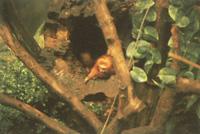
If you want to avoid the disappearance of all these species, you have to act faster than fast. It is not possible to follow only by means of prohibitions and constitution of reserves, although these are also necessary. It has already been passed to the manipulation of the species and their habitat: supply of nests for birds and bats, arrangement of protected routes for wild boars, placement of beds to prevent the placings of battering piles. Subsequently, missing or endangered species have been recovered.
However, we find a paradox, since if one day we want them to live free, we must let them reproduce in first captive. It is clear the importance of protecting these populations in danger of extinction, as well as the enormous work that, unfortunately, touches the zoological parks that will be the Noah's Ark of the year 2000.
Almost all the zoos in the world have become aware of this need and studies are being conducted to find solutions to fit the size of the catastrophe, using the most modern scientific tools (from population genetics to molecular biology).
According to experts, in terrestrial vertebrates there are about 2000 species in extinction and 160 primates, 100 carnivores, hundreds of amphibians and almost a thousand birds. In addition, demographic studies foresee that the rate of growth of the human population will occur within a century zero and from there will begin to decline. Therefore, there are still centuries left for wild animals to retake their natural environment. The zoos, then, must work taking into account the centuries (and not the years) and offer their numerous residents adequate living conditions.
The work in the zoo is more than show curiosities
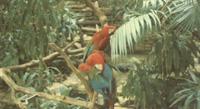
But let us recognize that in recent decades there have been significant advances: The “slaughterhouses” are on the way to extinction. The time of the prisoners ended when the animals died of the disease of solitude. Madness, giraffe, elephant and monkey to collect rare species from the other end of the world, and on the other hand, the road to extravagance, have ended. However, the conditions of these residents have also improved significantly.
So far, instead of contributing to the proliferation of populations in danger of extinction, zoos have taken the path of showing, in any way, exotic oddities.
At present, 80% of the animals censored in zoos have been born in the families or colonies of these zoos. But for a species to be held captive for centuries, it is not enough to ensure succession through breeding couples appearing in November. In this inheritance, we must preserve, among others, a level of genetic diversity and, therefore, its survival capacity.
Conservation of genetic diversity
Genetic diversity is the key to the problem. The greater the animal population, the more homogeneous is the genetic heritage throughout the generations. This genetic impoverishment can have serious consequences for the species. Proof of this is the South African cheetah.
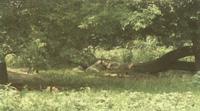
The specimens of the whole continent have been reduced considerably: they die a lot of young people, 70% die in nature and 29% of those born captive before six months. But what is the cause of these deaths? The endangered cheetah suffers from a genetic monotony.
Biochemical analysis of some of its proteins has shown that the variability of genetic composition is much weaker than in other mammals. Proliferation in small groups has significantly increased the rate of consanguinity among the gepards.
The results of this excessive homogeneity are extremely serious. The first consequence is the scarce reproductive capacity. The study of African gepard sperm has shown that they have ten times less sperm than normal sperm volume and that 70% of them are aberrant.
And what is more serious: for lack of genetic variability, the youngest specimens usually have a weakened immune system, so they have a great sensitivity to diseases. When polymorphism of the genes that control the functioning of the immune system is high, it is more powerful than the foreign elements of the organism. For example, in a study with cats, if skin grafts are performed among individuals of the same species incompatible between 7 and 13 days are sufficient to reject, but the same transplant is accepted by most pepards as if they were brothers of the same family. In addition, the immune system of African gepard is very sensitive to infective agents.
This natural problem is aggravated in zoological parks. The consanguinity rate of the species in captivity is high. And after many zoos in the world discover the problem, rare animals are exchanged regularly to escape equations of the same blood.
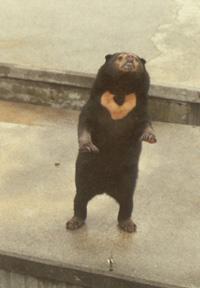
The problem is basic: How to measure this “genetic variability”? Apart from explicit signs such as the color and qualities of leather and wings, the biochemical forms that a same gene can adopt do not appear in most cases morphologically. To have an idea of the genetic potential of a species, it is necessary to resort to the latest molecular biology techniques. It allows you to measure your migrations in an electric field or study the chemical difference of proteins in blood.
With the results obtained and the genetic statistics of the populations, it is possible to define the minimum number of specimens necessary to maintain genetic polymorphism for the sustainability of the species, which will vary according to the rate of reproduction.
Exchange of animals between zoos
However, the reality is that many species are very far from that minimum and hence, to the extent possible, the need to distribute representatives of the same species in different zoos, both to avoid the complete disappearance in case of natural disasters or pests, and to channel the exchanges of genetic material by “association”, in addition to geographical limitations. In this sense, with regard to the species currently in danger of extinction, the celebration of international conventions is foreseen. The exchange of information between the different zoos of the planet is continuous thanks to computerization. However, more than the collection of the largest number of species possible, it has been detected the need to start a path of specialization depending on the climate, vegetation or local capacity.
We cannot forget the customs of animals
When choosing animals that will live captive, which will be largely responsible for the survival of the species, the first thing is to maximize genetic diversity. Morphologically the most differentiated specimens will be selected, eliminating invalid or abnormal animals. But this choice is more complicated than it seems. Most of the colonies of animals, depending on their geographical distribution, develop their adaptability and local habits, and their growth in highly selected territories can have catastrophic consequences. An example: In Czechoslovakia, after the disappearance of the Montese goat, they were initially replaced by Austrian goats. Subsequently, the Turkish goats were introduced into the group and a disaster occurred. Those born of these associations advanced their zeal for three months and the goats were born in February instead of being born in spring, the coldest month of the year. The population was greatly reduced in a very short time.
Second example: Efforts to save Sweden's dwarf geese. These nidificaban in northern Europe and were relatively abundant in these areas. At present, however, they descend, there are only about 300 pairs of which only 20 are pairs in Sweden.
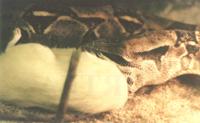
One of the causes of this decline was hunting in nesting sites; the traditional action of Laponians. This prohibition is currently prohibited and is respected. But those geese dwarfs spend the winter in Greece and Turkey and here they have no support.
The Swedes have tried to change migration routes to countries more respectful of endangered species. To do this, the fisheries of dwarf geese were captivated to put the branta to the sorcerers. The objective was that, after the incubation of eggs and the aging of nanocarcass, they were properly raised at birth and, when the time comes, they were brought to Holland in winter. Since 1981, 160 pups were installed in the brantas. They were ringed, of which about 70 have been seen in Holland, as planned. But nothing has yet been won because no reproduction has been seen.
On a more general level, all experts agree that breeding programmes in captivity should take into account, in addition to genetic diversity, other factors such as the very specific standards and habits of life of each animal.
A lot of work to do
From all this we conclude that there is still much to be done. Today, for most of the threatened species, much is lacking to overcome the border between theory and practice. Many animals, for example, continue to emerge from a single captive couple. However, we are facing a new era of economic and genetic management of endangered species. Around the world, it is trying to improve food to reduce the conditions of growth and mortality of young individuals. Artificial reproduction techniques allow mastering reproduction and extending it over time. The techniques of artificial insemination are already developed.
Buletina
Bidali zure helbide elektronikoa eta jaso asteroko buletina zure sarrera-ontzian











